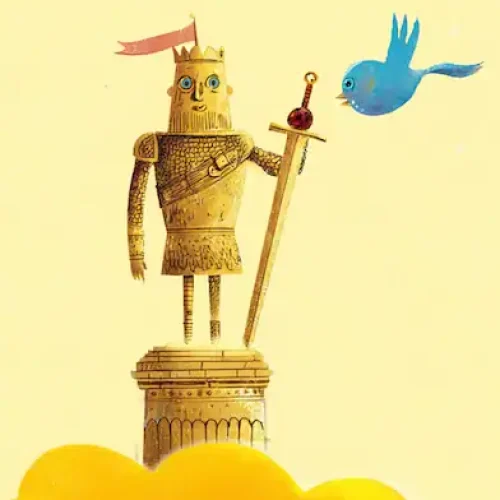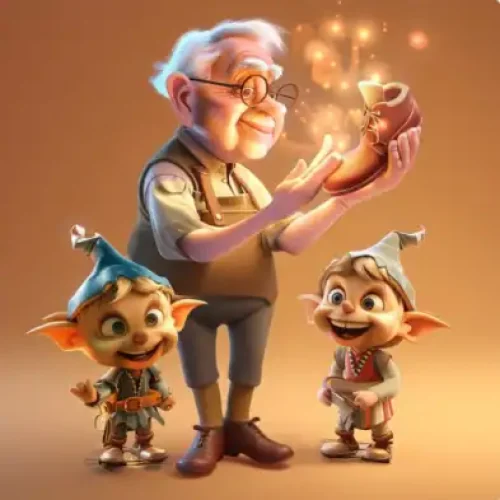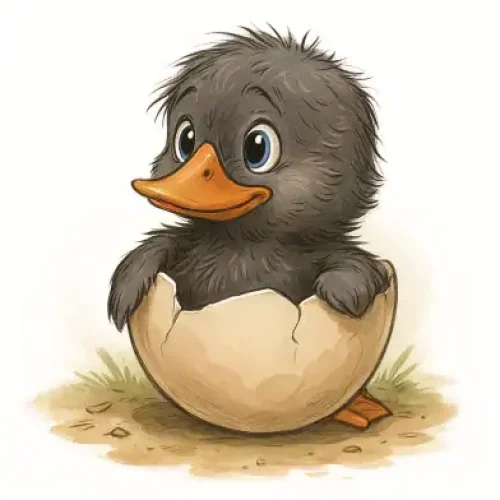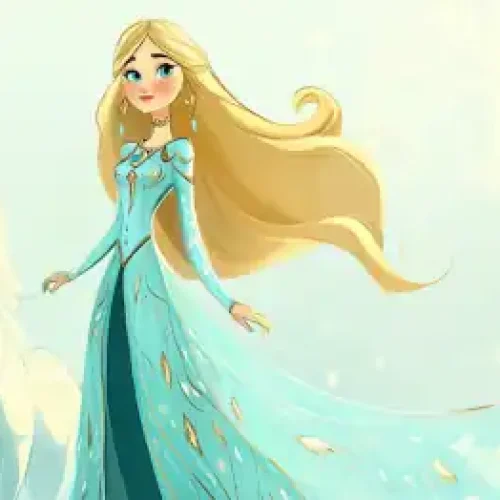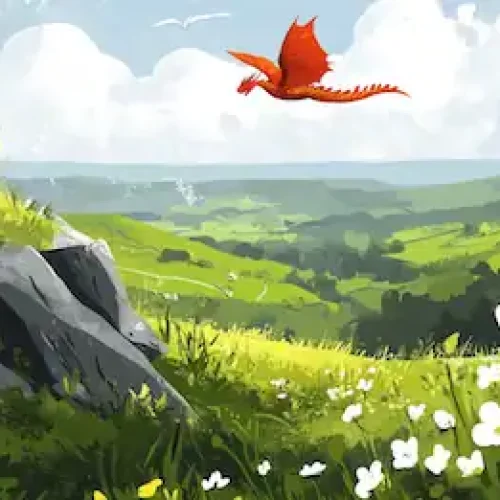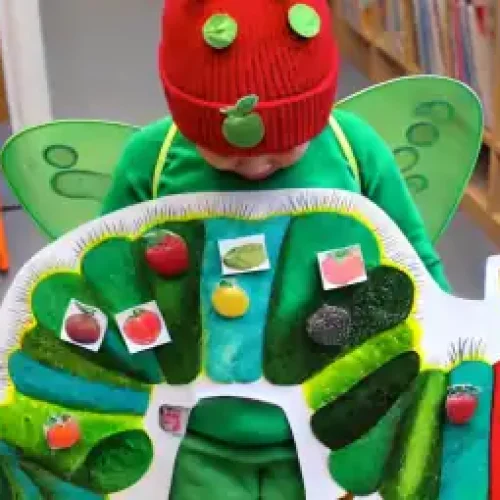

Summary
The Korean folktale “The Sun and the Moon” (also known as the tiger and rice cakes story) follows a brave brother and sister who outwit a hungry tiger and rise to the sky as the Sun and Moon. Perfect for ages 6–12, this retelling keeps the classic plot and rhythm that Korean families have shared for generations while making it easy for parents and teachers to read aloud, discuss the moral, and connect it to Korean culture and nature (like why sorghum grains are red).
The Sun and the Moon – A Korean Folk Tale
Long ago, in a small Korean village surrounded by rolling green hills and tall fields of sorghum, there lived a poor widow and her two children: a thoughtful young brother and his little sister.

They had very little, yet they were rich in love. The mother worked tirelessly for wealthier households, scrubbing floors, fetching water, and preparing great feasts that she could never eat. Each night, her children waited by their humble doorway, hoping she would bring back a scrap of food. No matter how tired she was, she always greeted them with a smile.
This is the tale of how those two children rose into the sky and became the Sun and the Moon, forever shining over the world.
The Mother’s Hard Work
Life was not easy for the widow. With no husband to help, she accepted any job that came her way. Some days she washed endless baskets of laundry in the river, her hands raw from the cold water. On others, she carried heavy baskets of wood for the rich families in the village.
Her son often said, “Mother, when I grow strong, I’ll work beside you.”
And her daughter added, “When I am big, I will cook you warm meals every day.”
The mother would laugh softly and kiss their heads. “You are my treasures. As long as we have one another, we have enough.”
The Festival and the Rice Cakes
One bright day, the richest man in the village held a grand festival. Lanterns swung from poles, music filled the air, and long tables groaned under plates of meat, fruit, and rice cakes. The widow worked from morning until dusk, sweeping and carrying, serving and scrubbing.

When the party ended, the host handed her a bundle of freshly made rice cakes. Their sweet scent drifted into the night.
“How happy my children will be,” she thought, hugging the bundle to her chest. She hurried along the darkening road, her steps light despite her tired body.
The Tiger Appears
But danger waited in the forest. A huge striped tiger leapt from the shadows, his yellow eyes glowing like lanterns. His teeth gleamed sharp as knives.

“Woman,” he growled, “give me one rice cake, and I shall not eat you.”
The widow trembled but quickly offered him one. The tiger swallowed it in a gulp. Then he padded after her, his tail flicking.
“Another cake—or I will eat you.”
She gave him another, and another. But no matter how many she handed over, the tiger always demanded more.
At last, her bundle was empty. The tiger licked his lips.
“Now, woman, I shall eat you instead.”
And with one dreadful leap, he devoured her whole.

The Tiger’s Disguise
The greedy beast licked his mouth and pulled on the widow’s clothes. He went to her little house and knocked at the door.
“My dears, it is your mother. Open the door for me.”

“That voice is too rough,” said the brother. “Mother’s voice is gentle.”

“I have a cold,” rasped the tiger.
“Then show us your hands,” demanded the sister.
The tiger thrust in his paws, dark and furry.
“Those are not our mother’s hands. Hers are pale and smooth,” said the brother.
The tiger quickly rolled his paws in flour until they looked white. This time, when he showed them, the children believed him. They opened the door.
The tiger slunk inside.
“Wait here while I make supper,” he said, hiding his twitching tail beneath their mother’s skirt.
But the brother caught sight of it. His heart thumped.
“That is no mother—it’s a tiger!” he whispered.
The Escape to the Tree
Without a second thought, the siblings dashed outside and ran into the night. Their bare feet flew over the earth until they reached a tall tree near the village well. Up they scrambled, clinging to the branches high above the ground.

The tiger prowled below, sniffing the air. He leaned over the well and saw two small faces shimmering on the water’s surface.
“Ah, you are in the well! I shall scoop you out with this bowl,” he chuckled.
But the sister called down, “No, foolish tiger — we are up here!”
The beast snarled and tried to climb, but the trunk was smooth and he slid down.
“How did you get up there?” he roared.
“We rubbed oil on our hands,” lied the brother.
The tiger smeared oil on his paws and tried again, only to slide faster.
Roaring with rage, the tiger seized an axe lying nearby. With great swings, he hacked rough notches into the bark.

Slowly, he began to climb, his claws scraping the wood as the children clung to the highest branches in terror.
The Children Pray
As the tiger drew nearer, the siblings pressed their palms together in prayer.
“Great Sky, if you wish us to live, please send us a rope!” they prayed with all their hearts.
Suddenly, from the heavens, a shining golden rope descended. The children seized it and began climbing swiftly toward the sky.

The tiger saw and roared, “Sky God! If you want me to catch them, send me a rope too!”
Another rope fell, but this one was frayed and rotten. The tiger grasped it and hauled himself upward. Halfway, the rope snapped with a sharp crack.
He tumbled down, crashing into the sorghum fields that bordered the village. There he died, and his blood soaked the stalks. From that day on, sorghum grains have been red.
The Children Reach the Sky
The brother and sister climbed higher and higher until they reached the great wide sky. Stars glittered around them, and soft winds carried them onward.
The Sky God appeared, his voice deep and kind.
“You have shown courage and cleverness. From this day forward, you shall shine above the world, giving light to all.”
The brother was told he would become the Sun, and the sister the Moon.
But the sister shivered.
“I am afraid of the dark,” she whispered. “Please, brother, let me be the Sun instead.”
The brother smiled gently, “Then I will take the Moon, and you may be the Sun.”
The Sun and the Moon
And so it was. From that day, the sister blazed as the Sun, warming the earth with her golden rays. The brother became the gentle Moon, glowing softly to guide travellers through the night.

Together they have watched over the world ever since, one bright and bold, the other calm and quiet.
Moral of the Story
The Korean folk tale The Sun and the Moon teaches us about love, courage, and wisdom.
Each character reminds us of a different kind of strength:
-
- The Tiger shows how greed and deceit can never be satisfied.
-
- The Mother shows kindness and compassion, but also that good hearts must choose wisely whom to trust.
-
- The Children show that love, courage, and cleverness can overcome even the fiercest danger.
-
- The Brother and Sister remind us that real strength lies in kindness, bravery, and hope.
Together, they teach that light and goodness will always return, just as the Sun and the Moon shine to guide us through the dark.
More Korean Stories
Enjoyed this story? Listen to the free audio, then explore more Korean folk tales for kids and join our newsletter for new read-alouds each week.
Try our classic Korean folktales for kids next—including Why the Sea Is Salty—or explore our Korean-written stories to practice your Korean (great for learners and bilingual families).
You can learn more about Korean Folklore here.
Want to Read more Korean stories?

